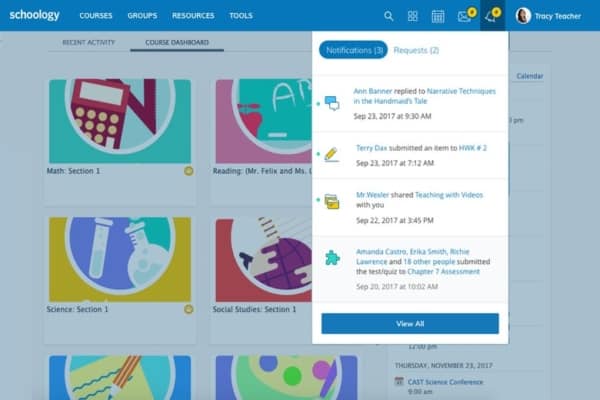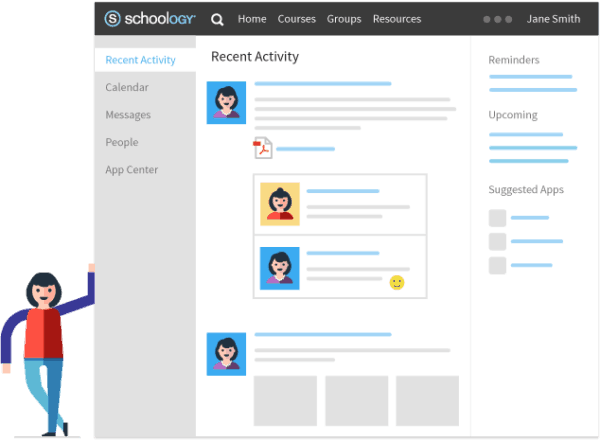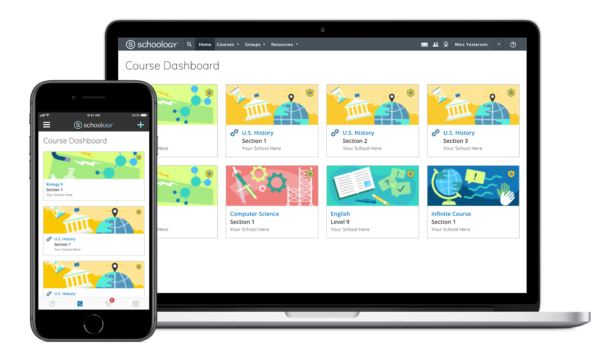Are you getting all that you can out of your LMS (Learning Management System)?

Most teachers and schools aren’t, and that’s a shame. An LMS is a powerful tool that can do more than keep classrooms organised and streamline the presentation of information. Used to their fullest potential, they can transform learning and increase collaboration and engagements.
Unfortunately, a recent study from the Educause Center for Analysis and Research found that while over half of faculty respondents used their LMS to share information with students, only 41 percent used it to promote interaction outside the classroom. LMS systems often become a storage bank for online materials instead of a truly collaborative learning tool. While it’s a positive step for many educators to feel more organised and use less paper, that’s only one small facet of what your LMS has to offer your staff—and your students.
Training Teachers to Use Your LMS Effectively and Efficiently
Why are so many useful features going underutilised? In many cases, it’s all about the training—or lack thereof. For example, about one-quarter of faculty surveyed in the Educause study felt dissatisfied with both initial and ongoing LMS training. This is often because training is seen as a one-time event rather than an ongoing learning process. On-site specialists and on-demand training will go a long way toward putting the power into the hands of your staff to get what they need to make the most of the LMS.
Administrators and decision makers must remember that dissatisfaction with training is not the same thing as a desire to eliminate training altogether. On the contrary, there’s good evidence that teachers and admin staff want better training so that they can get more out of their LMS use. According to the Educause study, 57 percent of teachers say they would teach more effectively if they were better skilled at using their LMS. This ranks well above educators’ desire for learning about other EdTech opportunities such as social media, 3D printers, and online collaboration tools.
Likewise, it’s also a good idea to teach students how to use the LMS to ensure that they aren’t wasting time trying to figure out the tech when they could be more squarely focused on learning. Don’t assume that “digital natives” intuitively know how to use a given platform right away: 51 percent wish they were better at it, so it’s worth taking the time to directly instruct them on LMS usage, as well.
Alignment of Goals and Objectives

When considering new or additional training programs for teachers, take a thoughtful approach. Because an LMS has the potential for far-reaching changes to instructional strategies, schools should carefully consider their overarching educational goals and work to make sure that all administrators, teachers, and support staff are working toward the same outcomes.
Such an alignment requires input from all stakeholders, and once goals are in place, you’ll also need to make sure that you collectively work to reach those objectives. This is where LMS training can transform learning. As teachers look for ways to reach goals surrounding collaboration, individual pacing, and achievement benchmarks, using the LMS to deliver differentiated instruction and to track student progress toward learning goals is key.
As you work to implement new strategies, LMS training and implementation should go hand-in-hand with your overall strategic planning for best results.
A Centralised Location for Teaching Strategies and Tools
In addition to allowing for easy collaboration and individualised learning, your LMS is also a powerful tool to help instructors stay organised and save time on everything from sending a student just-right material to tracking their progress over time and reporting student achievement.
When there’s a single online place for teaching strategies, tools, and materials, teachers can focus less on management and more on individual instruction and guidance. That’s what most teachers signed up to do, so knowing how to make the most of an LMS is likely to reduce burnout and turnover over time.
Having everything available for everyone to access also breaks down barriers to learning. Rather than having to be in one place at one time, students can get what they need at their convenience and revisit material as often as required.
This freedom makes learning much more student-centred than teacher-centred, according to Martha Barwick, Coordinator of Instructional Technology at Harford County (MD) Public Schools. It also encourages more convenient collaboration among teachers, who can share tools and materials seamlessly, without having to meet in person. When your staff can plan their lessons on their own time, they can get more done in less time.
The Bottom Line

With all that an LMS has to offer, it would be a shame to let many of its most useful features go unused. Instead, use LMS training as an event that leads you to align your learning goals and focus your technology use on reaching those learning outcomes. When you focus your LMS training to your institution’s needs, educators get the in-depth understanding they crave to use the LMS to its fullest potential. This will allow them to streamline their work and tailor their delivery to each student to boost achievement and collaboration.
If you’re already using Schoology or are interested in meeting to discuss what a long-term professional development strategy might look like for your school, to get the most out of the opportunities available through eLearning and an LMS, please get in touch with me for a chat.
Brad Friis
General Manager – GCT Education
021 288 3308
[email protected]
